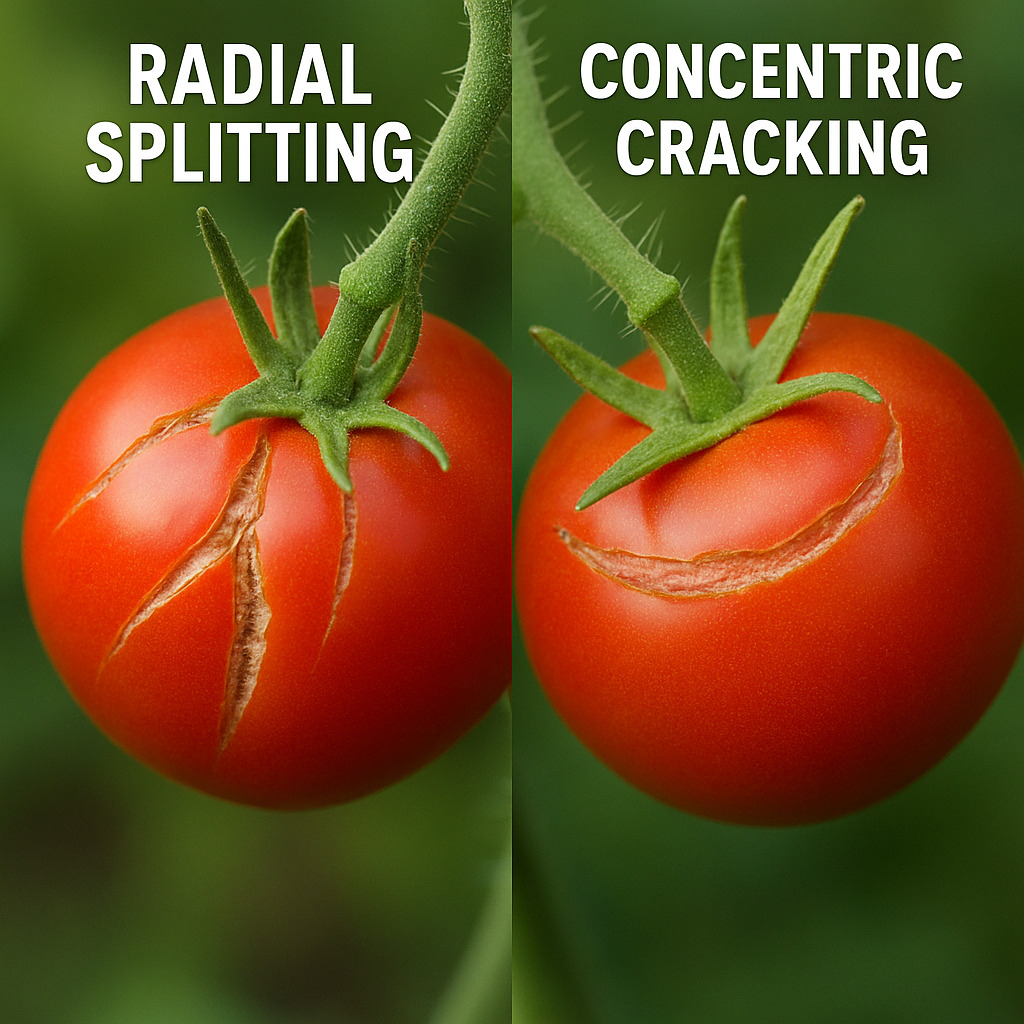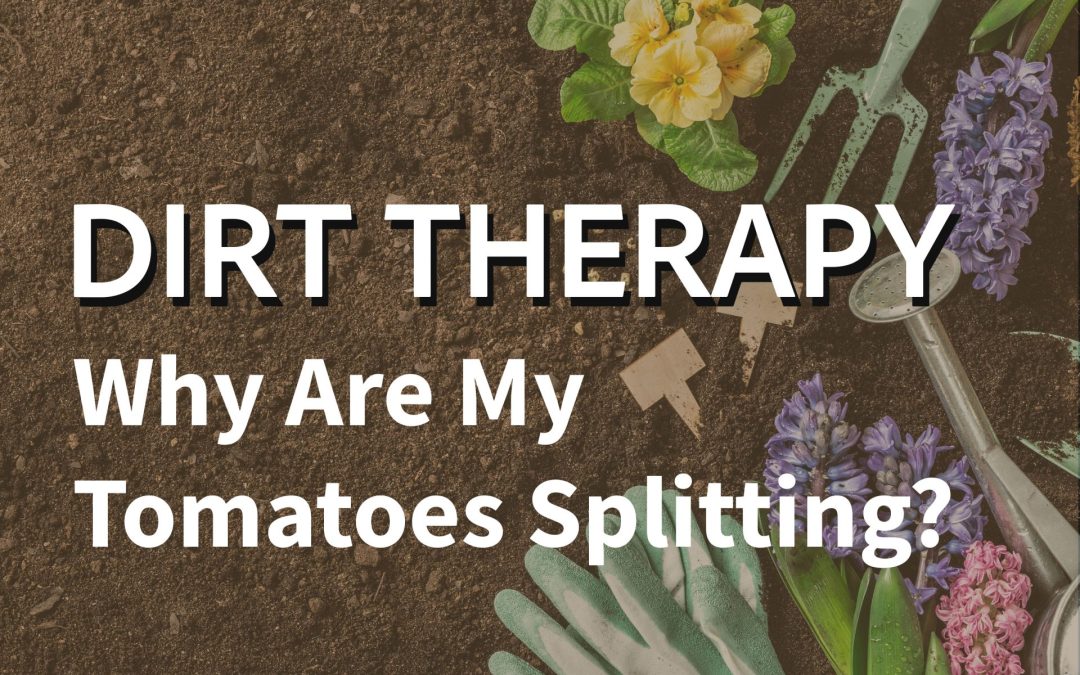
Why are my tomoatoes splitting? Have you ever asked yourself that question? If you’ve ever walked out to your tomato patch in the morning, proud as can be, only to find your beautiful red fruits looking like they’ve been attacked by tiny, invisible swords—you’re not alone. Cracks, splits, even full-on tomato ruptures are all too common this time of year. But don’t worry. Your tomato plants aren’t broken, and you didn’t do anything wrong (well… maybe not wrong, exactly). Let’s talk about what’s happening and how to fix it.
What Causes Tomato Splitting?
Tomatoes split when they’ve been too dry for too long, and then suddenly get a big gulp of water—like after a heavy rain or an overzealous watering session. The inside of the fruit absorbs the water quickly and swells faster than the skin can keep up, causing the skin to crack under pressure.
Think of it like blowing up a water balloon too fast. Something’s gotta give—and in this case, it’s your tomato’s smooth, juicy skin.
There are two main types of cracking:
- Radial splitting: Cracks run from the stem downward like rays of sunshine (but, you know, tragic).
- Concentric cracking: Circular cracks around the top of the fruit, kind of like a tomato’s version of laugh lines.

Can You Still Eat Split Tomatoes?
Yes! In most cases, you can eat a split tomato—just get to it before bugs, bacteria, or mold do. If the crack is small and the inside still looks fresh and juicy, slice it up and enjoy it. If it looks mushy, blackened, or full of curious little critters… maybe let that one go.
How Do You Prevent Tomatoes From Cracking?
Good news: this problem is fixable. A few adjustments can go a long way.
1. Water Consistently
Try to water your tomatoes at the base (not overhead) and keep the soil evenly moist. Deep watering a few times a week is better than shallow watering every day.
2. Mulch, Mulch, Mulch
A nice layer of mulch helps hold in moisture and keeps the soil from drying out too fast. Bonus: it also cuts down on weeds and reduces splash-back from soil-borne diseases.
3. Pick Tomatoes Early
If a rainstorm is coming, go ahead and harvest any that are nearly ripe. They’ll finish ripening just fine on your windowsill—and you won’t have to mourn another tomato casualty.
4. Choose Crack-Resistant Varieties
If this is a recurring issue, try switching to varieties known for thicker skin or better resistance to splitting—like ‘Celebrity,’ ‘Juliet,’ or cherry tomato types.
Real Talk From The Garden
Here’s the thing—plants aren’t perfect. And neither are we. A few split tomatoes are just part of the journey. It doesn’t mean your green thumb is losing its grip. It just means your tomatoes got a little too excited about hydration.
So the next time you see a cracked one on the vine, don’t beat yourself up. Scoop it up, slice it up, and enjoy that flavor explosion while it lasts. Summer is short, but tomato season is even shorter! Go on and enjoy those cracked tomatoes and as always… HAPPY PLANTING EVERYBODY!!!

Did you enjoy reading Dirt Therapy: Why Are My Tomatoes Splitting? If so check out another great article from our Dirt Therapy series HERE


Recent Comments